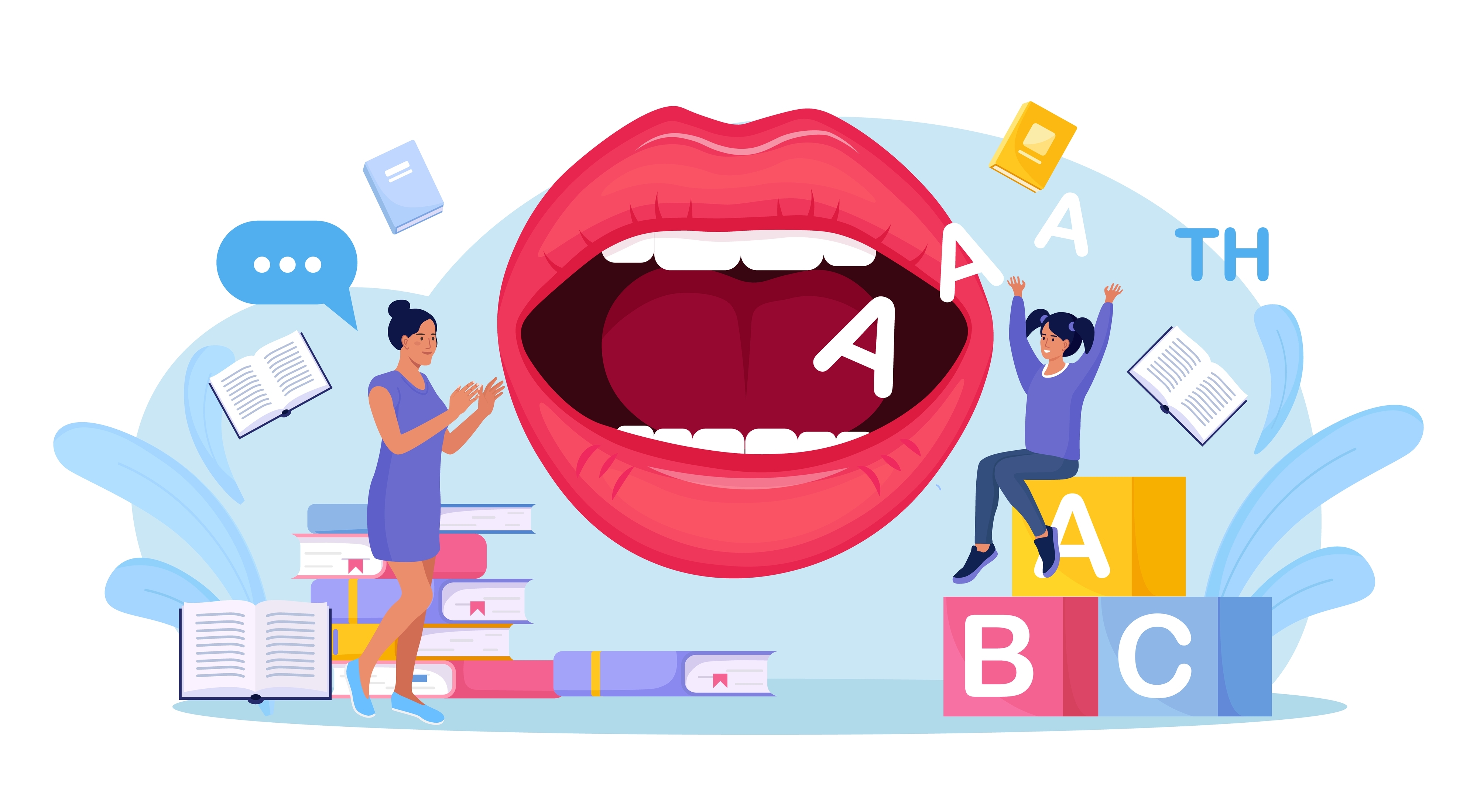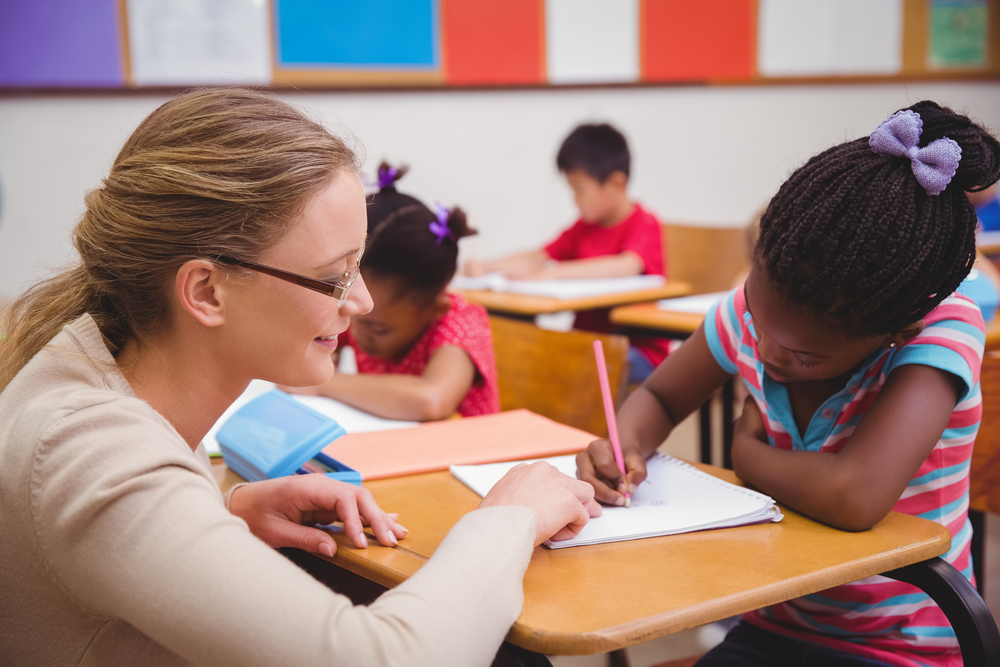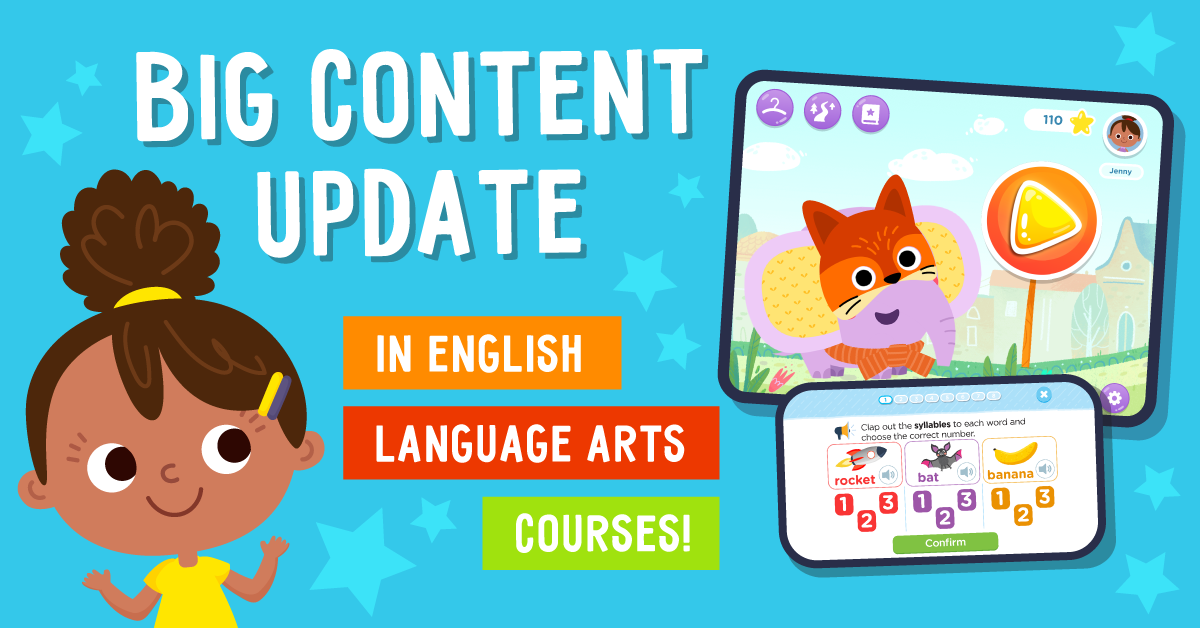Normal Reading worksheets activities for Ages 3-6
10 filtered results
-
From - To
Welcome to our "Normal Reading Worksheets Activities for Ages 3-6" page! Designed for young learners, our worksheets engage children in foundational reading skills through fun and interactive activities. Tailored for ages 3-6, these worksheets include colorful illustrations and playful exercises that keep children motivated and encourage a love for reading. Each activity supports early literacy development, helps expand vocabulary, and enhances comprehension abilities. Perfect for home or classroom use, our resources provide parents and teachers with valuable tools to foster essential reading skills. Explore our collection today to make learning an enjoyable and rewarding experience for your little ones!


Finding the Details and Connections: Assessment 2 Worksheet
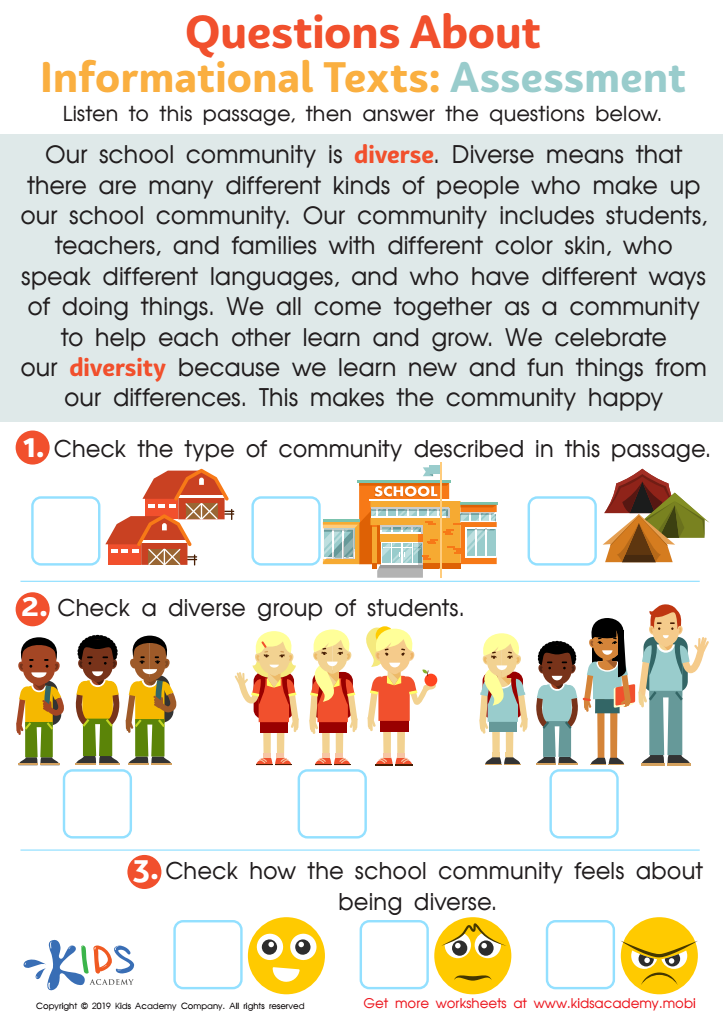

Questions About Informational Texts: Assessment 1 Worksheet
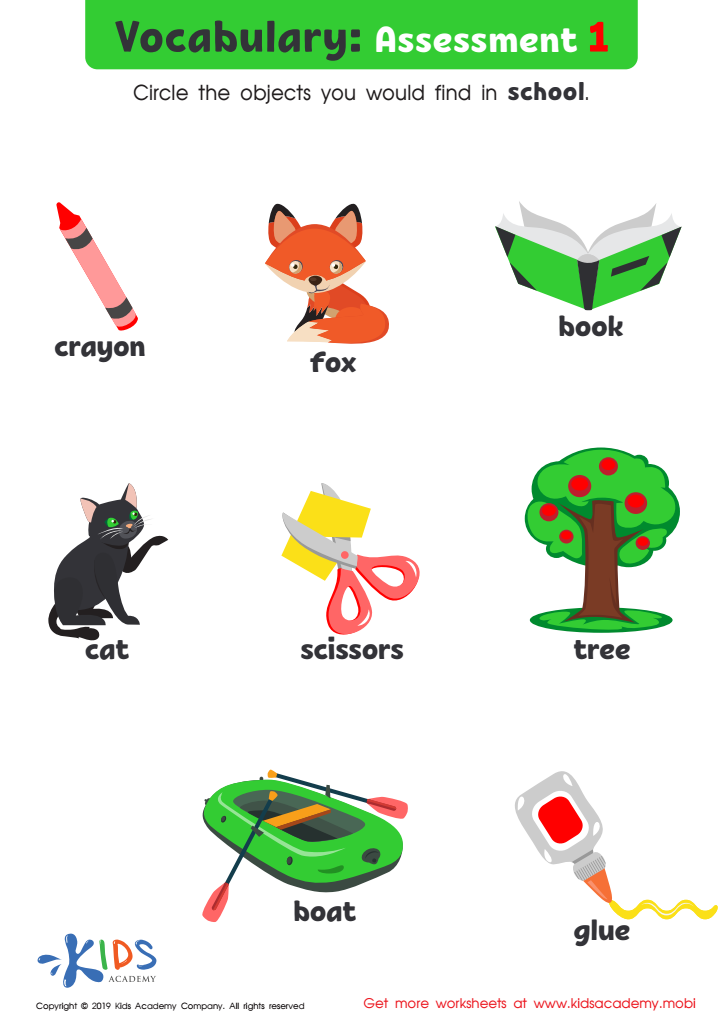

Vocabulary: Assessment 1 Worksheet
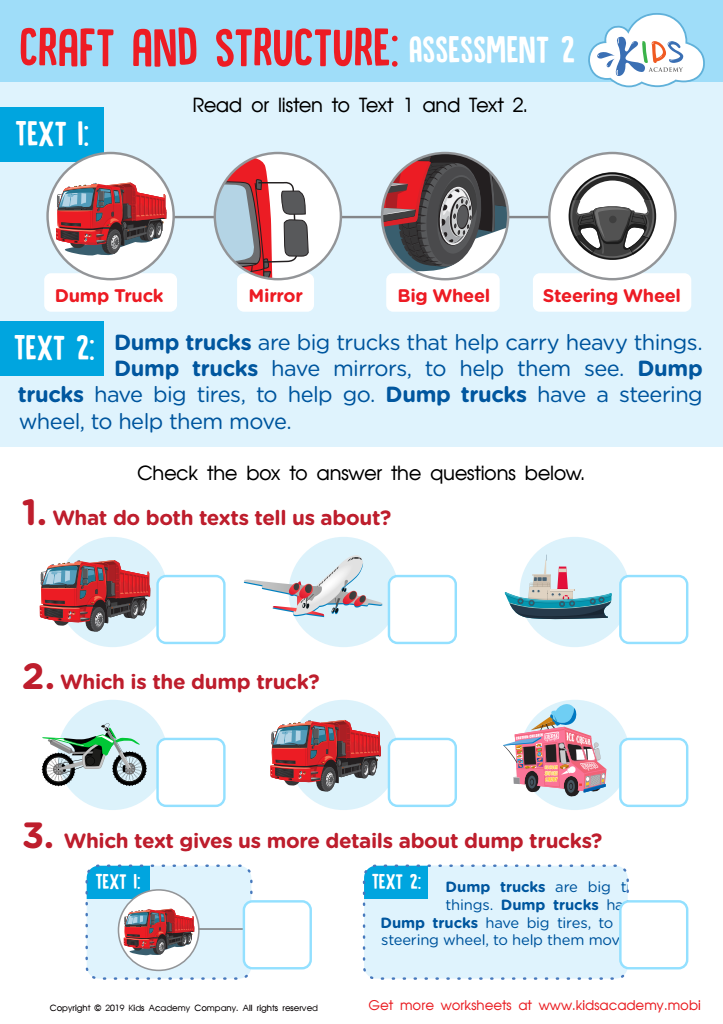

Craft and Structure: Assessment 2 Worksheet
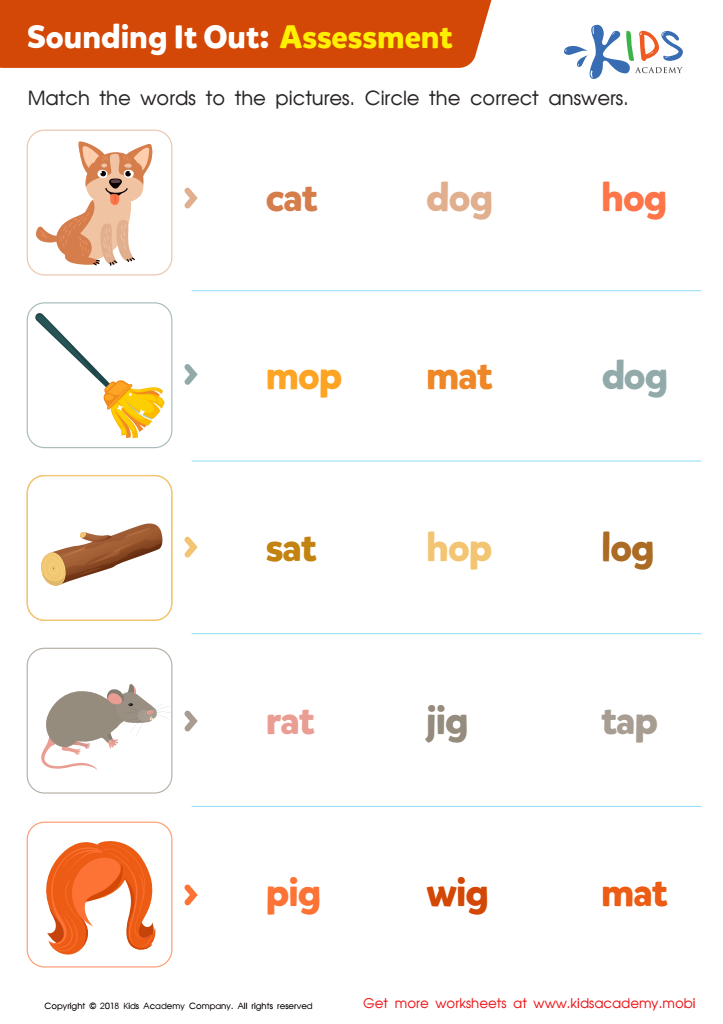

Sounding it Out: Assessment Worksheet
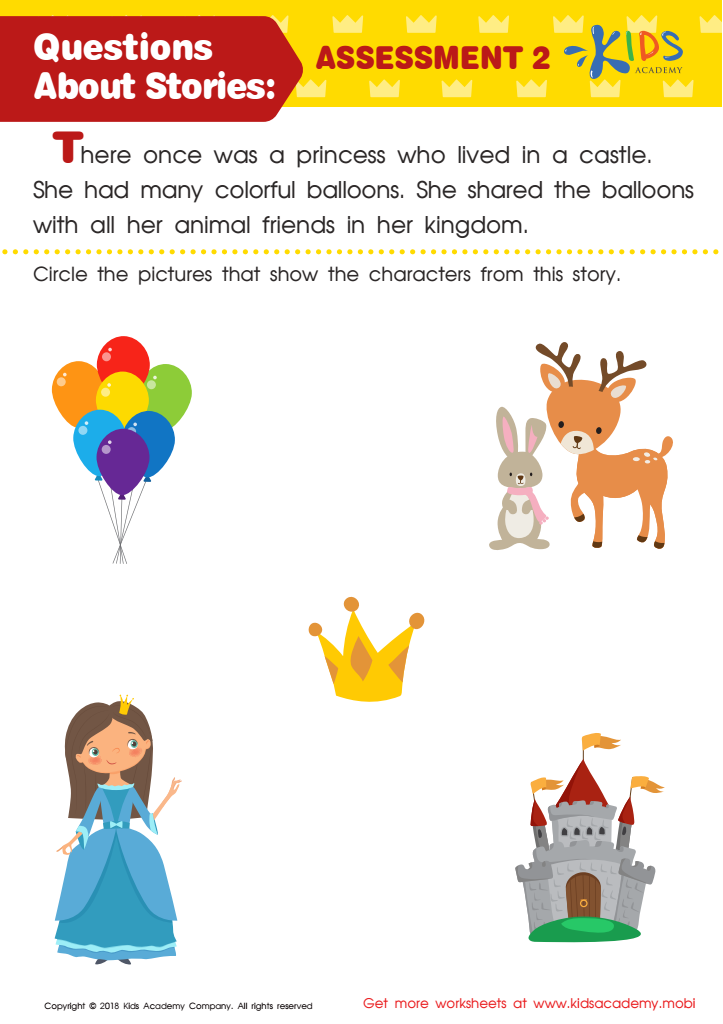

Questions About Stories: Assessment 2 Worksheet
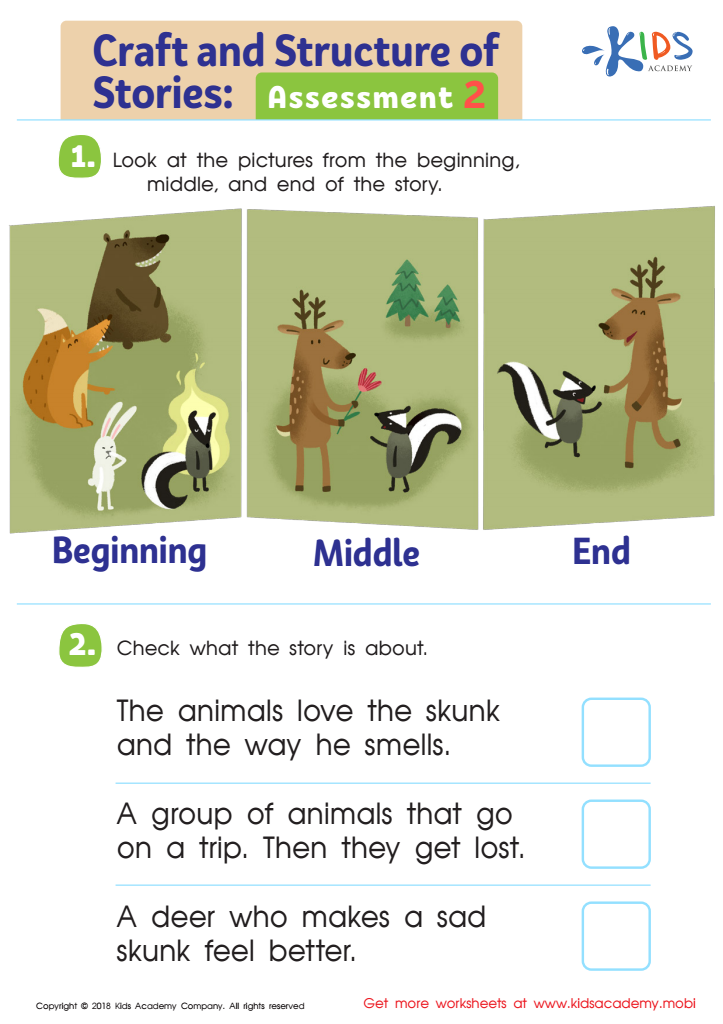

Craft and Structure of Stories: Assessment 2 Worksheet
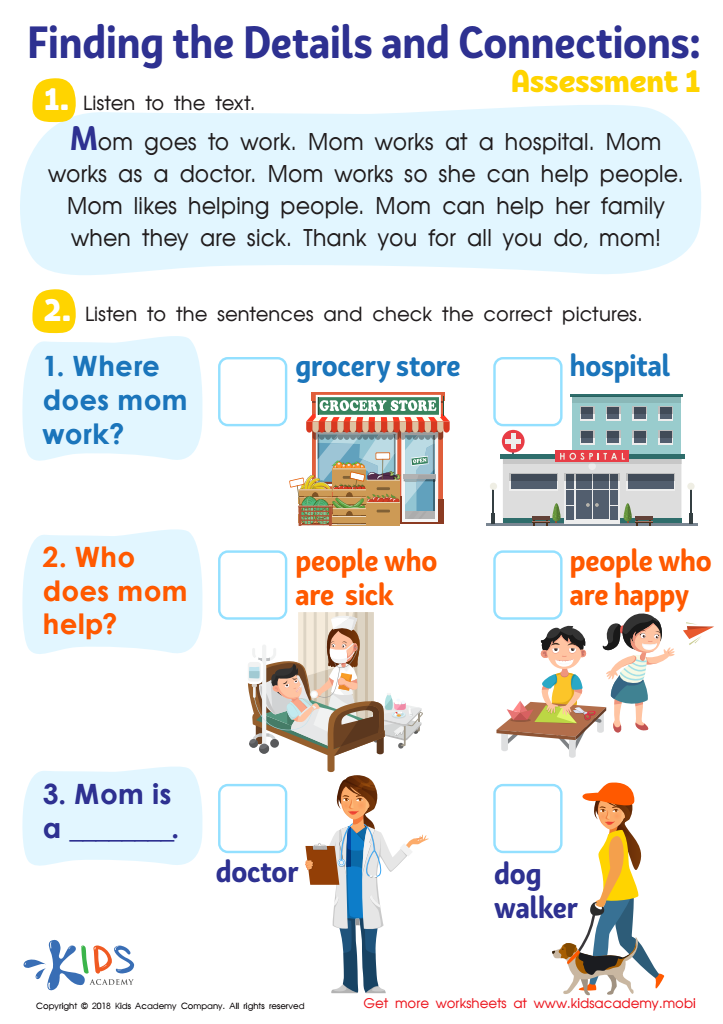

Finding the Details and Connections: Assessment 1 Worksheet


Craft and Structure of Informational Texts: Assessment 1 Worksheet
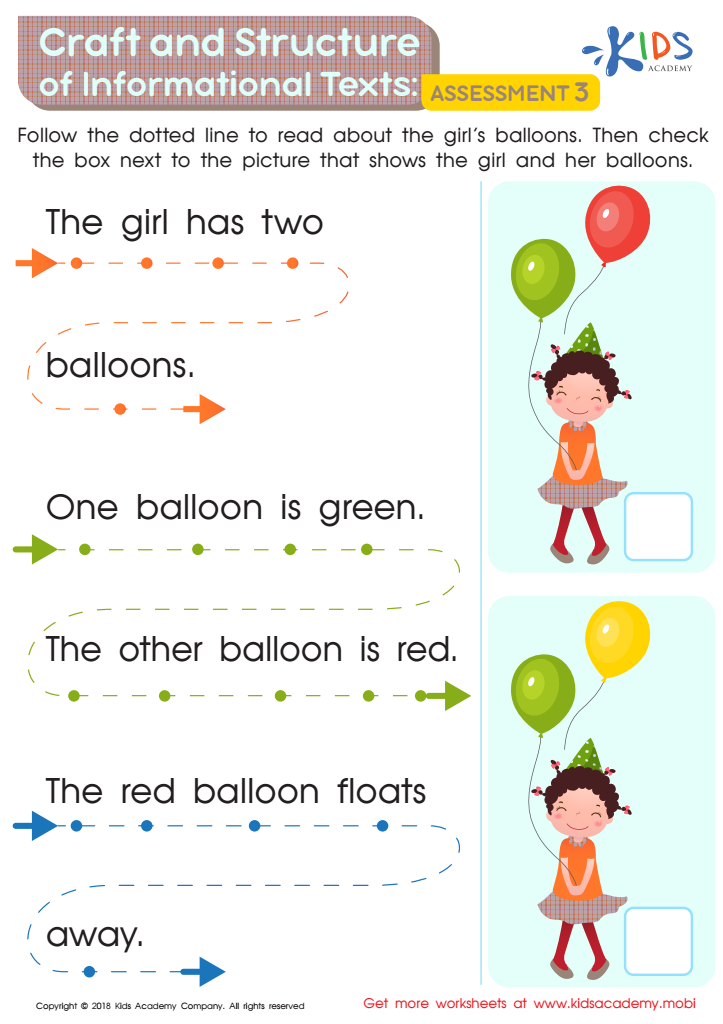

Craft and Structure of Informational Texts: Assessment 3 Worksheet
Parents and teachers play a crucial role in fostering early reading skills for children aged 3-6, as these formative years lay the foundation for a lifetime of learning. Engaging in normal reading activities during this stage nurtures children's cognitive, social, and emotional development. First and foremost, reading activities enhance vocabulary, comprehension, and language skills, helping children express themselves effectively.
Additionally, regular reading can significantly boost children's curiosity and imagination, encouraging a love for storytelling and enhancing creativity. Interactive reading experiences—like discussing illustrations or predicting plot developments—promote critical thinking and communication skills, critical competencies in future learning.
Furthermore, reading together fosters bonding between parents, caregivers, and children, creating a supportive environment where children feel valued and encouraged to explore literate experiences. This connection promotes a sense of security essential for healthy emotional and social development.
Importantly, children who engage in reading activities by age 6 are more likely to develop strong literacy skills necessary for academic success. By prioritizing reading time, parents and teachers can inspire a lifelong passion for reading, ultimately cultivating insightful and confident learners. Fostering these practices can shape not only children's academic paths but also their views of the world around them.
 Assign to My Students
Assign to My Students



